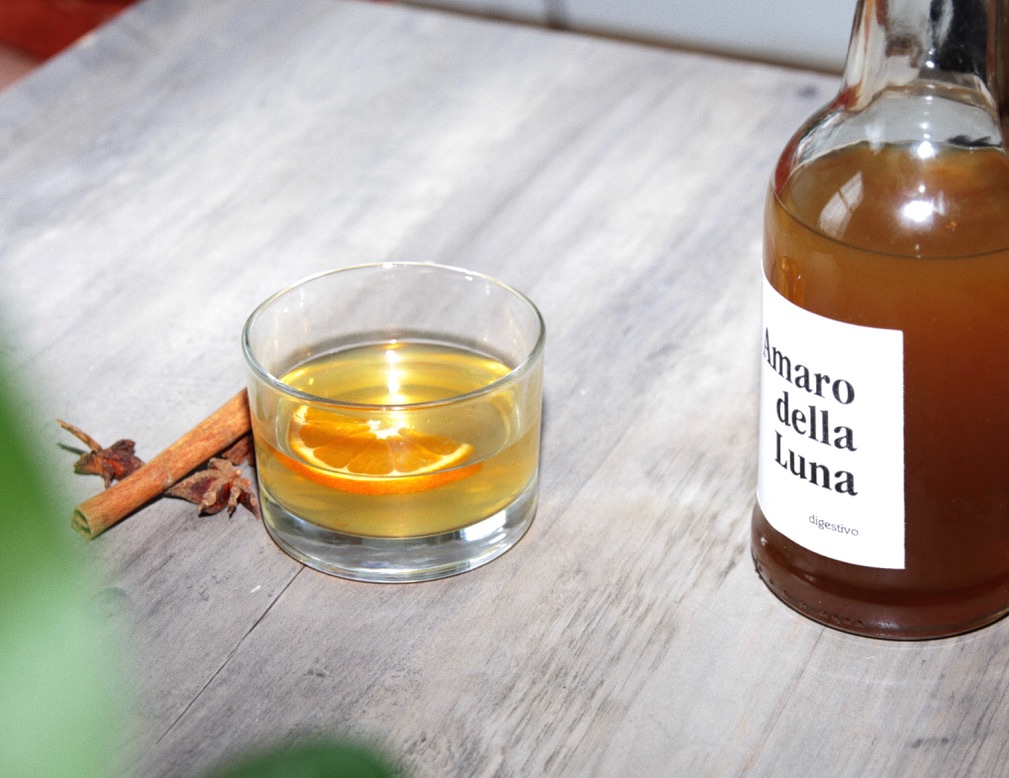
What is Amaro?
Amaro /əˈmärō/ is literally the Italian word for ‘Bitter’. The word is broad yet precise, and very misused! The history of the stuff is mysterious, and the recipes are often mysterious. It’s culinary, medicinal, and traditional.
It’s not just booze! The tradition of extracting herbs in alcohol is a long one - you’re preserving the flavors of something indefinitely. As we talked about, the flavors of alcohol-extracted herbs isn’t always what you want, but it’s something, and it’s potent!
Inspiration for this project:
I was working in an Italian kitchen. On this particular day, I was preparing a few batches of gelato for the next week. The thought came across me that if I can extract flavors into gelato base like I’m doing, why not alcohol? I thought about it, and about what might be alcohol-extracted. I thought about all the liqueurs that existed. I went to the library and found this book
I’m someone who deeply enjoys the spirit of creating. Most of my hobbies enjoy crafting something. After bartending and working in a kitchen for a few years, I thought it was time that I put my skills to the test!
There’s a principle in action that’s doesn’t seem so well known - the idea of fat soluble vs alchol soluble flavorings.
The Ingredients List 🗒️
Tools
- A Large GLASS jar (1 gallon+) (very important that it’s glass and seals well)
- Time ⏰ (2-3 weeks)
- Star-San or similar sanitizer
- PBW cleaner
Ingredients
- juniper berries
- star anise
- pine needles (could be foraged)
- cardamom, green
- cinnamon
- licorice root
- cinchona bark
- orange peel
- lemon peel
- lime peel
- mint leaves
- basil leaves
- choice of sugar (White, Turbinado, or Muscovado)
Other/Abstract
- Patience
- Technique
Sanitize everything!
for this step, I used a 5 gallon foodsafe bucket and Star-san
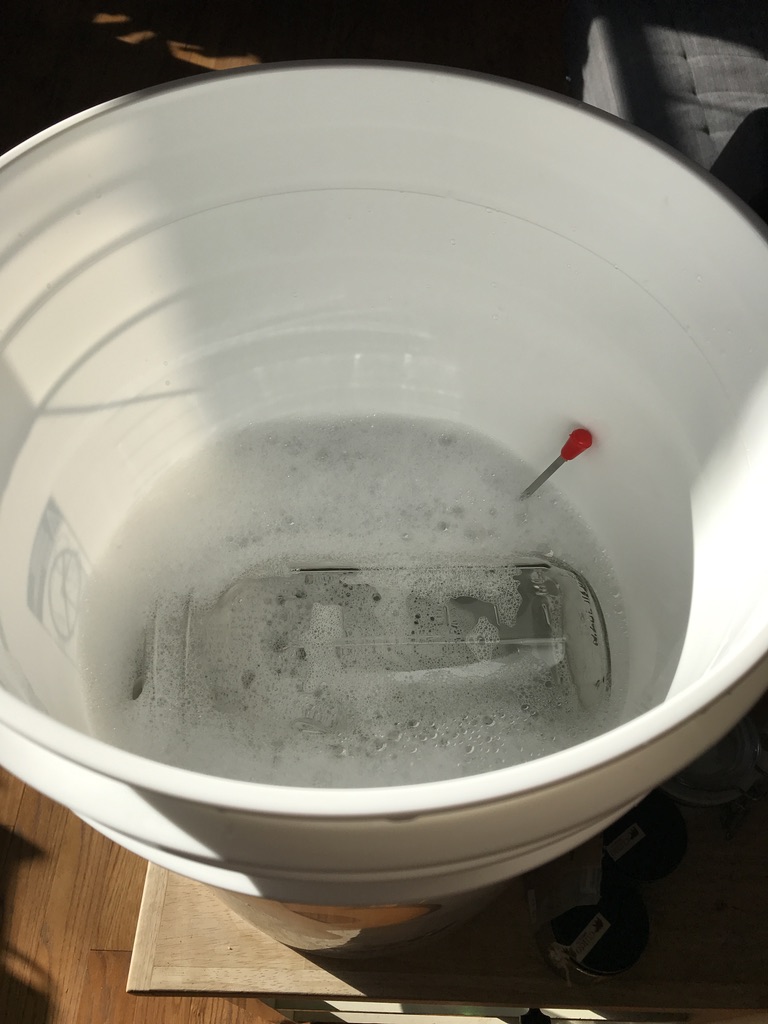
Get your high-proof neutral-grain alchohol (95% ethanol)
(And here I thought everclear was just for punch)
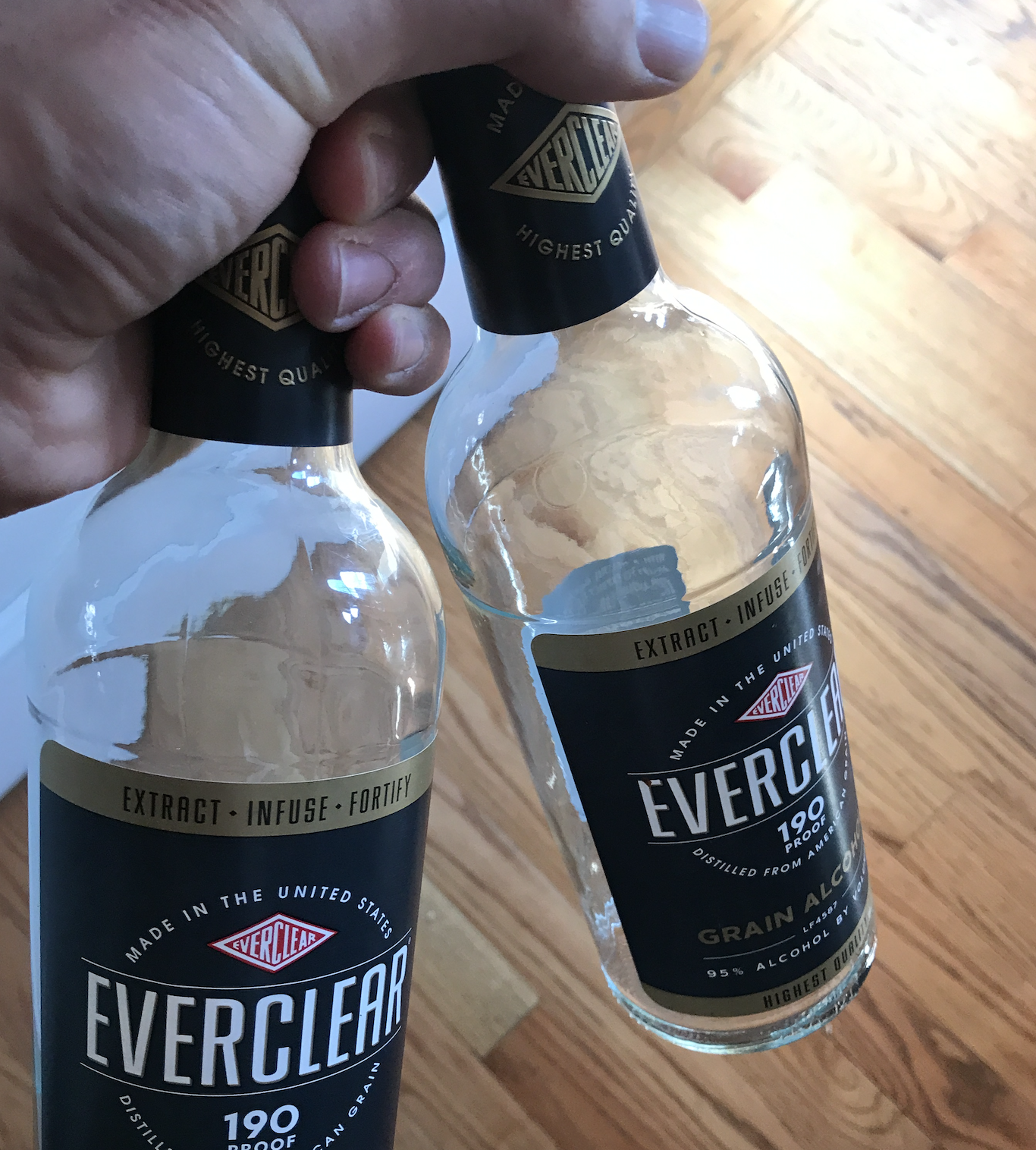
Gather your ingredients.
Here are all the citrus peels, herbs, spices. I toasted the peels and spices on a pan to bring out some more roasted flavors.
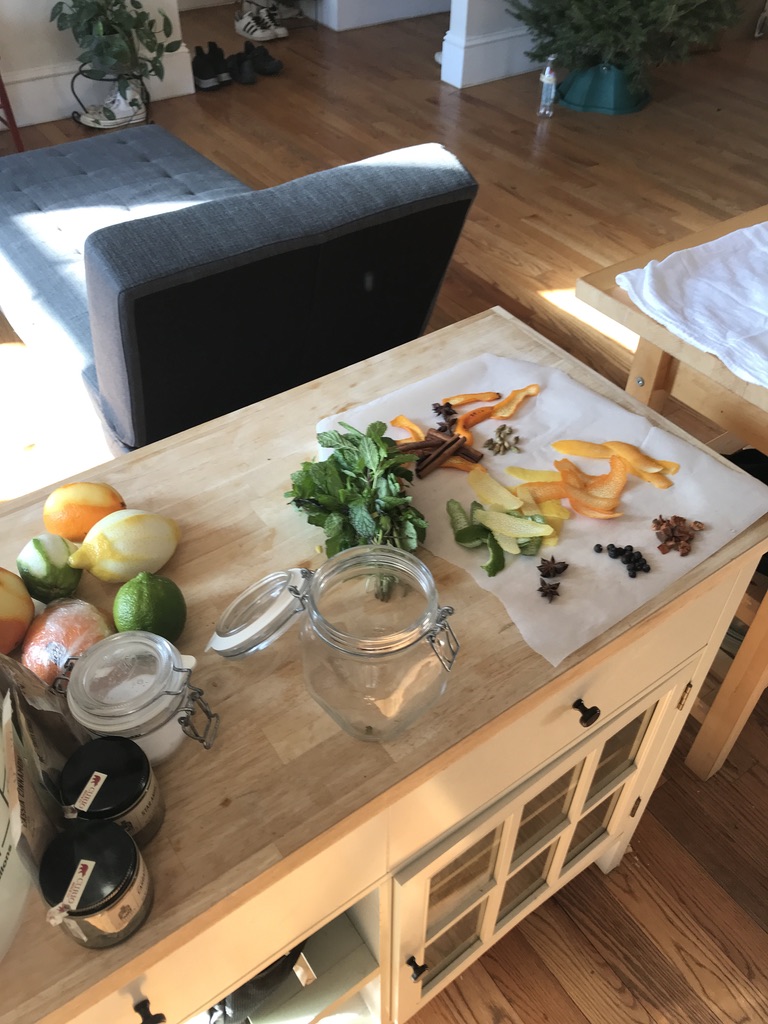
Mix it all together, then wait! (3 weeks)
Heat accelerates reactions, but could also combust your kitchen in this situation! The boiling point of ethanol is 173 F, but it’ll quickly evaporate even at room temp.
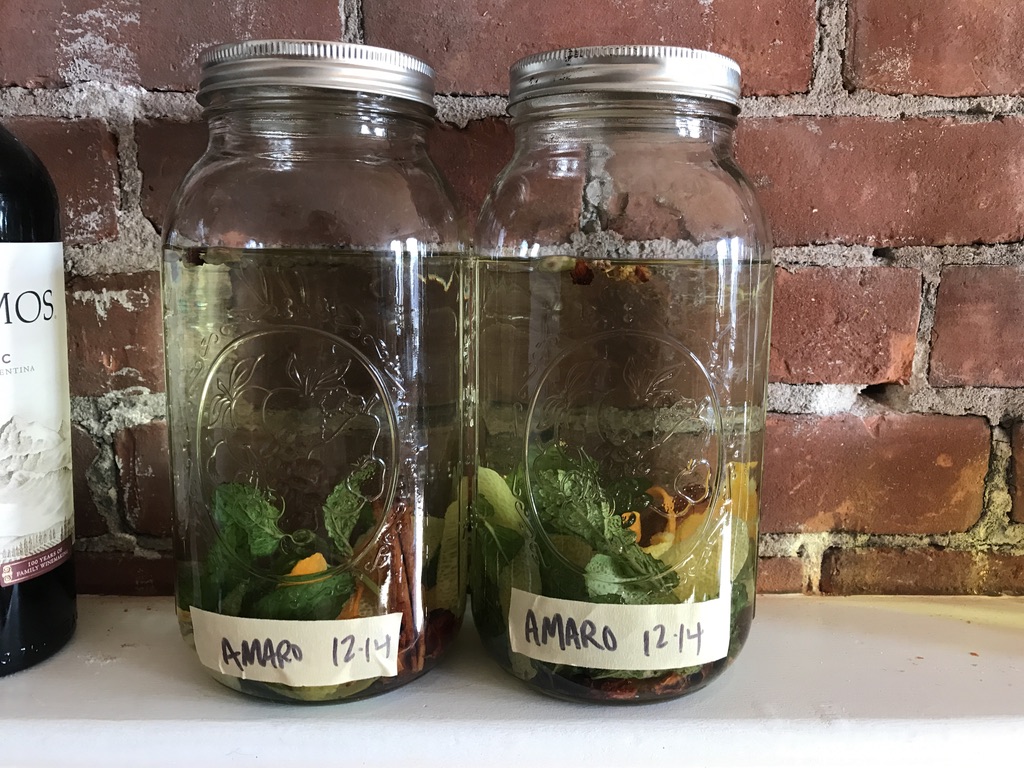
Dilute, Add Syrup, Serve
This is the fun part. You have your fully extracted herbal alocohol, but it’s still about 90-95% alcohol (180 proof). You’ll probably want to bring that down to about 20-25% to make it pallatable, adding simple syrup and purified / distilled water.
I added turbinado syrup to taste, which added a nice molasses flavor and color! I was a bit too excited so I didn’t really measure carefully how much sugar I was adding.
Here’s the finished product, served with a slice of orange and some soda water.
